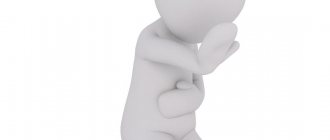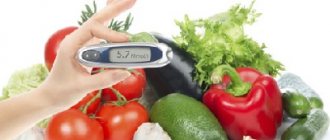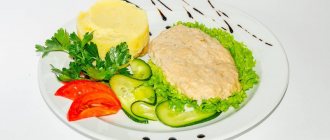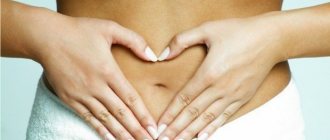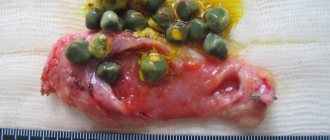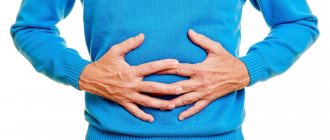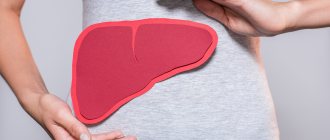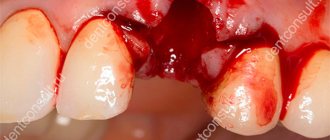The gallbladder is one of the organs from which you can expect not entirely pleasant surprises in the form of severe pain in the right hypochondrium. It functions as a reservoir for collecting and storing bile, which aids in digestion. Accumulation and stagnation (cholestasis) of this fluid causes changes in its composition and the formation of stones. This is usually due to:
- hormonal disorders;
- anatomical structural abnormalities;
- emotional and nervous stress;
- errors in nutrition - frequent overeating, consumption of fatty or fried foods, smoked foods;
- high cholesterol;
- taking certain medications;
- hereditary predisposition.
In what situations is the gall bladder removed?
When an ultrasound examination reveals sand or small stones that do not cause attacks and can be crushed and dissolved, there is no need for surgical intervention. The indication for manipulation is damage to the organ itself. Most often, laparoscopic cholecystectomy is performed - a minimally invasive and low-traumatic operation using special instruments and modern technology. Pathologies for which it is performed:
- cholelithiasis leading to the formation of stones. During the period of inflammation, a pronounced pain syndrome occurs due to stones getting stuck, causing spasms of the bile ducts;
- acute cholecystitis is a complication of cholelithiasis that can lead to serious consequences in the form of sepsis (blood poisoning), damage and rupture of the walls of the gallbladder, followed by peritonitis;
- polyposis – benign growths of the mucous membrane, prone to malignancy (malignancy). Laparoscopy will be required if they increase in size, their number is more than two units, their diameter exceeds 10 mm, or the patient has clinical signs that worsen the quality of life;
- cholesterosis, associated with a slowdown in lipid metabolism in the body, which leads to the accumulation of cholesterol deposits on the walls of the organ and functional disorders. Surgery is necessary when diet and drug therapy do not produce positive results.
Two months later
Task: do not irritate the digestive tract, focus on protein foods that dilute bile.
If recovery proceeds normally, there is no pain or discomfort, then you can gradually expand your diet, however, avoiding foods from the “absolute prohibition list.”
It is better to eat vegetable soups or with lean chicken broth, but without frying onions and carrots. You can add half a teaspoon of melted butter or olive oil to the finished soup.
Boiled meat of tender and lean varieties is acceptable. Prepare a side dish without frying - it can be boiled or steamed carrots, pumpkin, squash, zucchini, cauliflower, beets. It’s good to add greens to them.
For dinner, boiled or stewed fish with a little oil is suitable - cod or catfish. Garnish with boiled potatoes; young and freshly cooked ones are especially good. You can make jellied fish, but do not fill it with too concentrated broth: dilute the broth with vegetable broth on gelatin. Boiled squid, shrimp and mussels are also good - they contain easily digestible protein, which is necessary at this time.
Low-fat cottage cheese is also useful for dinner, preferably in the form of a casserole. Such protein dishes make bile thinner. The best dessert at this time is baked apple, apple marshmallow and marmalade.
Recipe of the day. Veal in whey
Soak fresh veal overnight in whey. In the morning, cut into pieces and cook in the oven or in a dry frying pan, without oil, over low heat so that there is no brown crust.
Consequences of deletion
According to statistics, in 90% of cases, patients are discharged from the hospital without presenting serious complaints. However, with the loss of the gallbladder, the transportation of bile is disrupted; the function of its storage and delivery to the duodenum falls entirely on the liver. In new anatomical conditions, there is a risk of stone formation in the hepatic ducts and the need for repeated surgery, installation of a stent, and drainage. To prevent this, it is imperative:
- visit a gastroenterologist or hepatologist once every 6-12 months to examine the hepatobiliary region;
- do an ultrasound of the abdominal organs annually;
- in accordance with the doctor’s prescriptions, regularly or in courses, take antispasmodics, drugs to thin bile and improve digestion.
Planned visits to specialists will also be needed because changes are also occurring in the work of other organs of the gastrointestinal tract.
In some cases, after the intervention, people may experience discomfort or pain in the right hypochondrium, which goes away on its own within a week. If this continues longer, then most likely the pathology is associated with postcholecystectomy syndrome (PCES), characterized by bacterial overgrowth, duodenogastric reflux, duodenal obstruction, etc. After making a diagnosis and determining the mechanism of development of the disease, treatment consists of diet and pharmacotherapy: anti-inflammatory and antibacterial agents, enzymes, motor regulators.
Gymnastics for the abdomen
Many who have undergone removal of the gallbladder are recommended to do special exercises to improve the functioning of the digestive system - after one and a half to two months if there was an abdominal operation, and a month after endoscopic surgery. Exercises are needed to strengthen the abdominal muscles.
>> Standing, feet shoulder-width apart, hands on your waist, carefully turn your torso to the right and left in turn. The stomach will stretch a little, but you should feel what the optimal amplitude is.
>> Then lie down on the floor, bend your knees, take a deep breath and bend your knees in one direction or the other. It is useful to place a 200-300 gram bag of sand on the upper abdomen and, as you exhale, lift it higher, and while inhaling, lower it. The same should be done with the bag placed on the lower abdomen.
Recovery in the first days after surgery
After laparoscopy, the person is under the supervision of medical staff for two days. If any unpleasant symptoms appear, they are easily relieved. The most common concerns:
- bitterness in the mouth;
- nausea;
- change in taste;
- feeling of heaviness in the right hypochondrium;
- bloating;
- diarrhea.
With strict adherence to the doctor’s recommendations, improvement in well-being is noted within a week, and full recovery takes six months. After some time, the entire body is rebuilt, but limitations still remain.
Further rehabilitation after gallbladder removal
To quickly return to your normal lifestyle and prevent the development of complications, you need to do the following within a month:
- follow the prescribed diet;
- avoid overheating, hypothermia, increased physical activity, lifting weights over 3 kg;
- refuse to visit baths, saunas, solariums, swimming and relaxing on the beach;
- exclude sexual contacts;
- refrain from drinking alcohol;
- perform light exercises every day without straining the abdominal muscles;
- use a belt-bandage made of elastic fabric.
After 7 days, you can go for half-hour leisurely walks.
The action of a unique technique used in our clinic by Dr. Borisov, called Selective Chronophototherapy (SPT), which is based on photodynamic therapy, is capable of activating a cascade of biochemical and cellular reactions to regulate the level of immune status indicators, demonstrates excellent results both when used independently and in combination with other methods. This significantly reduces the risk of relapse of cancer and the severity of side effects from cytostatic agents, while enhancing their effect on the affected cells.
Dr. Borisov’s gentle technique can be used repeatedly; a course of treatment is recommended. The number of procedures is regulated by the treatment regimen and achievement of the desired result.
We recommend taking VIALIFE capsules or VIALIFE solution, because they contain the highest possible concentration of chlorophyll, which:
- strengthens the immune system;
- enhances cell regeneration;
- saturates tissues with oxygen;
- has antioxidant, anti-inflammatory, detoxifying effects.
Sample menu
1st breakfast. Crumbled buckwheat porridge with vegetable oil (1/2 teaspoon), tea with milk (1 glass), 100 g of Adyghe cheese.
2nd breakfast: baked apple.
Lunch: vegetarian borscht in vegetable oil, boiled meat in milk sauce, carrots stewed in vegetable oil, fruit compote.
Afternoon snack: rosehip decoction.
Dinner: boiled fish, stew of zucchini, carrots and cauliflower in vegetable oil, tea with mint.
At night: kefir – 1 glass.
The norm for the whole day: white bread – 300 g, sugar – 30 g, butter – 10 g.
Nutrition
Since after the removal of the bile, the body is slowly rebuilt, which directly affects the functioning of the digestive tract, you will have to follow a special diet “table No. 5”, the purpose of which is to reduce the load on the liver and normalize the functions of the biliary system. It maintains optimal nutritional levels and satisfies the body's energy needs. The diet includes the required amount of proteins and carbohydrates, while reducing the amount of fat consumed.
The main principle is frequent, split meals every three hours in small portions. Food should be warm and taken at the same time. What is allowed:
- meat – lean beef, chicken, rabbit;
- fish - hake, cod, pike perch;
- cereals – rolled oats, rice, buckwheat, durum wheat pasta;
- low-fat fermented milk products;
- egg omelet or soft-boiled eggs;
- boiled, steamed, baked vegetables;
- fruits – sweet and semi-sweet apples, pears, bananas;
- desserts - puddings, casseroles, jellies, dried fruits, honey;
- drinks - pure water, non-acidic juices, jelly, compotes, fruit drinks, herbal decoctions.
No more than twice a week you can allow yesterday's bread, crispbread, crackers. Prohibited:
- fried, smoked, spicy foods and sauces;
- fast food, canned food, semi-finished products;
- fatty meats and fish, lard, offal;
- sausages;
- animal oil;
- pearl barley, millet, corn grains;
- rich soups with meat and fish broths;
- mushrooms, garlic, ginger, legumes;
- yeast baked goods, black bread;
- carbonated drinks;
- sour berries, citrus fruits.
This is a gentle and healthy diet, but its disadvantage is that some dishes may seem bland at first. However, they will bring maximum benefit, since they are easily digested, do not create a burden on the gastrointestinal tract and stimulate its normal activity.
Over time, the body physiologically fully adapts, and then the diet gradually changes towards the usual one used before cholecystectomy. The process must be controlled, the indicator will be good health and normal laboratory test results.
Dish recipes
{banner_banstat5}
Dietary nutrition after cholecystectomy is an integral part of the rehabilitation of the postoperative period for the patient. The purpose of such a diet is to reduce the load on the digestive system of animal fats.
Cauliflower soup
Blanch the vegetable and divide into inflorescences. Cook the cabbage in lightly salted water for no more than 5 minutes. Grind with a blender, add the mixture to the vegetable broth. Add 1 tbsp to the puree. l. wheat flour. Cook the soup over low heat for another 5 minutes after boiling, stirring constantly with a spoon. Before serving, add a piece of butter to the bowl of soup.
Steam cutlets
{banner_banstat6}
You will need:
- 300 gr. chicken fillet;
- 1 onion;
- 1 carrot;
- zucchini
Boil meat and vegetables separately, chop finely and grind in a blender. Add a raw egg to the mixture. Form cutlets. The process of cooking a dish in a double boiler lasts at least half an hour. Serve with potato side dish.
Milk porridge with rice
Boil the rice and puree in a blender until it becomes a paste. Boil a glass of milk. Add rice, a little salt and butter. Boil the porridge over low heat for 5 minutes.
Rice jelly
Add starch and sugar to the rice water. Serve warm with bread crumbs or Lenten cookies.
Cottage cheese casserole from the oven
{banner_banstat7}
Necessary:
- 250 gr. low-fat cottage cheese;
- 1 chicken egg;
- 2 tbsp. l. semolina and sugar;
- oil for baking sheet.
Rub the cottage cheese through a sieve, combine the mixture with the rest of the ingredients, and beat with a mixer. Pour the mixture onto a greased baking sheet and bake at 180 degrees for 30 minutes. Serve with strawberry or raspberry jam.
After dietary nutrition, the body gets used to the dishes, and other organs begin to perform the functions of the gallbladder. With positive dynamics, the menu expands and new products are added. To achieve uniform variety, use different variations in preparation and combination of acceptable products.
Prognosis and recommended lifestyle
Every person undergoing surgery is concerned about the question of how his future existence will turn out. Will it be the same as before, or will it become less complete due to restrictions? It all depends on gender and age, the patient’s health status, the rate of tissue healing, and the presence of chronic diseases. Not only proper nutrition is of great importance, but also reasonable physical activity. Spending a long time in a chair or lying on the sofa leads to obesity and causes stagnation of bile. Gentle exercises, walks in the fresh air, measured work at home and in the garden help to increase its circulation. Short swimming in the pool several times a week improves metabolism and relaxes the spine. If you or your loved ones need professional support in rehabilitation after surgery, our specialists will help with this. Sign up for a free initial consultation to discuss further steps with your doctor that will make it possible to avoid post-operative complications and re-formation of stones, as well as reduce rehabilitation time.
